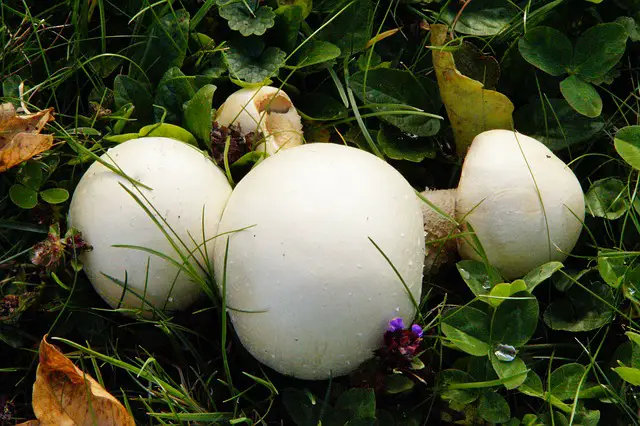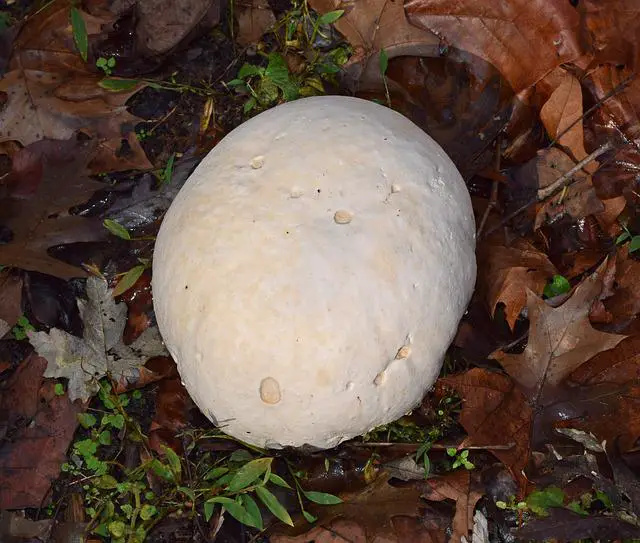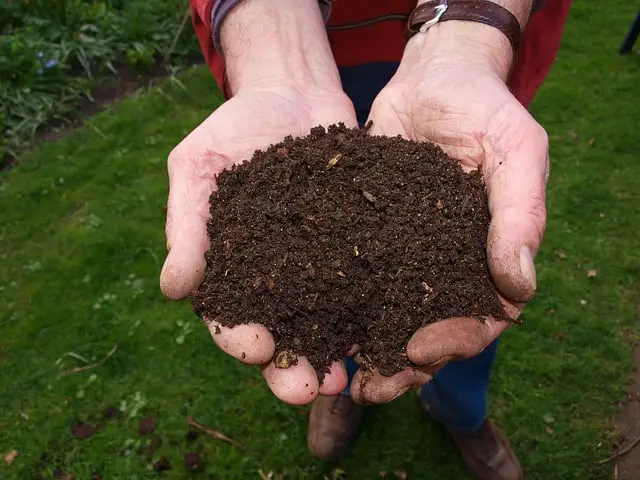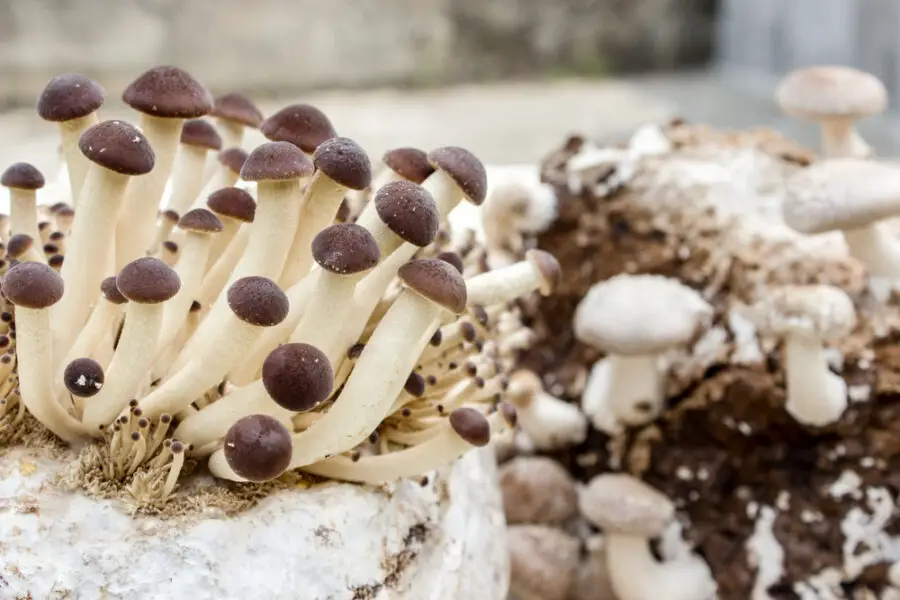Are you a wild mushroom forager or simply enjoy trying out new kinds of mushrooms? If you are interested in seeking out Puffball Mushrooms in order to add these tasty treats to your wild meal recipes, you may be wondering what time of year they grow.
The time to go hunting for Puffball Mushrooms is during their growing season in late summer or early fall. Oftentimes, this means sometime between August and September, or even October. Of course, this may vary slightly depending on your latitude and its associated climate patterns. The further north you are, the shorter the growing season will be.
People often like to hunt for Puffball Mushrooms as they can be difficult to source in stores or even farmer’s markets. Luckily, they are usually easily identified in the wild. For instance, Giant Puffball Mushrooms can grow to more than a foot in diameter under the right growing conditions. The rest of this article will dive into when to eat Puffball Mushrooms, their growing conditions, and cooking ideas.
When to Eat Puffball Mushrooms?
If you have found Puffball Mushrooms in the wild, it is important to know that you have correctly identified the mushroom. Although Puffballs are an amateur’s favorite, as it is usually easily recognized, immature Amanita Mushrooms (highly poisonous!) can sometimes be mistaken for Puffballs during their early growth cycles. Generally, if you stick to the Giant Puffballs, which are much larger, you should be ok.

There are also times within the Puffball growth cycle when you don’t want to eat them because they can also become toxic. According to Grocycle, only young Puffball Mushrooms are edible. It should be completely white and have no evidence of any spores. When sliced in the middle, it should be pure white. Once a Puffball Mushroom matures, it will begin to brown and spores will be found in its center.
If you have found what you think are mature Puffball Mushrooms, simply wait a week or two and return to the area where you found them and there should be new young mushrooms beginning to spring up from the soil. If you are a first-time forager, always reference mushroom identification books or speak with a seasoned forager before consuming any mushroom to be absolutely sure that it is edible.
Check out this video to see more about how to identify Puffball Mushrooms in the wild.
What Are Puffball Mushroom Growing Conditions?
According to Grocycle, Giant Puffball Mushrooms are the most common species of Puffball Mushrooms and they can be found all over North America and Europe. They typically grow in open grassy meadows and fields in nutrient-rich soils near the edge of wooded areas. Sometimes they can also be found under deciduous forest canopies.

You may even mistake these large mushrooms are discarded soccer balls as they tend to like well-fetilized lawns such as soccer fields or golf courses. You will never find a Puffball mushroom growing on a log or on trees. They tend to come out after heavy rainfall.
Unlike many other mushrooms, Puffball Mushrooms do not grow on a mycelial network. Due to their trillions of spores (that explode in a puff when the mushroom is stepped on- hence the name), they will begin growing wherever the spores have landed and growing conditions are suitable.
How to Harvest Puffball Mushrooms
If you think that you’ve found a Puffball Mushroom, or a collection of them, you should start by noting the color on the outside which should be white all over. If they are yellowish or greenish in color, they may be too old. When pressed with the finger, the mushroom should feel a bit firm.
Then slice one or more of the mushrooms in half to determine the color inside. A Puffball Mushroom will be a creamy white all the way through. If you notice any signs of coloration or gills, it may be another kind of mushroom. If there are signs of spores, the mushroom is too old. In this case, you can stomp on the mushroom to release its spores and return at a later time to harvest the young mushrooms.
The very base of the mushroom can be cut away and discarded. Although some Puffball Mushrooms have a stalk, they are usually tough and woody and aren’t edible. Be sure to look for insects, larvae, and worms in order to cut them away as well. When you cut open the mushroom, inspect the edges of the mushroom for any tunneling that may be signs of insect infestation.
How to Store and Cook Puffball Mushrooms
According to Forager Chef, Puffball Mushrooms should be cleaned and refrigerated as soon as you bring them home, otherwise, they will begin to smell and go bad. Due to their large size, you may also want to freeze or dry some of them in order to use them later.
In order to clean the puffball, you can either brush the outer skin under cool water or peel the outer layer of skin off entirely. However, keeping the skin on will preserve the freshness for longer so you may want to wait until you are ready to cook the mushroom. It should also be noted that it is perfectly ok to eat the outer skin as well, you will just want to be sure it is cleaned thoroughly.
Puffball Mushrooms are known to have a mild flavor, similar to tofu. Just like tofu, they also take on whatever flavor you add to them. They are great in stir-fries, miso soup, and other Asian cuisines. Some people choose to batter and fry slices of the Puffball. There are also pizza recipes where the slice of Puffball Mushroom is used as the crust of the pizza with layers of toppings added on top.
Conclusion
Puffball Mushrooms tend to grow in the late summer and early fall. Not easily found in stores or farmer’s markets, they are often foraged from the wild in grassy areas, along forested areas, or sometimes under deciduous canopies. Their ease of identification makes them a fun mushroom to hunt for, especially for amateur mushroom foragers and there are many great cooking recipes to enjoy them in!
Hi, I’m John Stephens, chief editor and writer for Totalgardener.com. I’ve been gardening and raising animals for over 15 years starting with a small backyard plot in Northern Virginia where I grew corn, potatoes, squash, and using a high mulch technique called the Ruth Stout Method. I also raised ducks and small mammals for meat and eggs in a movable pen similar to the ones used by Joel Salatin. I later moved to Colorado where I experimented with growing greens using aquaponics inside. I eventually added a microgreens setup and home sprouting operation. I’m excited to share everything I’ve learned plus more from the other local gardening and animal raising experts I know.



